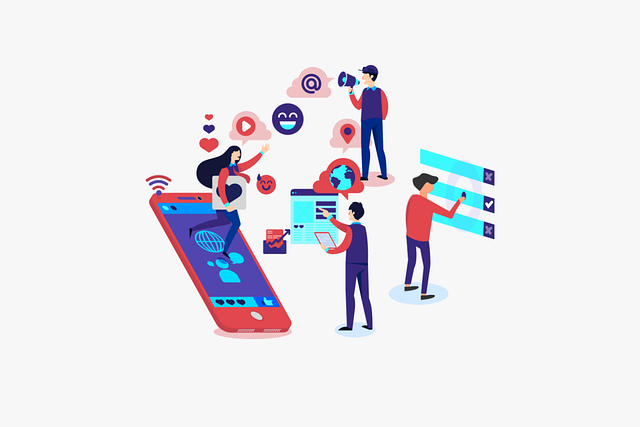Visual Marketing: A Comprehensive Guide

Visual marketing is a strategy that involves using visual elements to convey a message, engage an audience, and promote products or services. This approach taps into the power of visuals to capture attention and communicate more effectively than text alone. Visual marketing includes a wide range of content types such as images, videos, infographics, animations, and more. By appealing to the visual senses, brands can create more memorable and impactful marketing campaigns.
The Importance of Visual Marketing in Today’s Time
In an age where attention spans are shorter, visual marketing has become indispensable. Here are some reasons why visual marketing is crucial in today’s digital landscape:
-
Enhanced Engagement
Visual content is more engaging and likely to be shared than plain text. Social media platforms like Instagram, Pinterest, and TikTok thrive on visual content, making it essential for brands to create visually appealing posts to engage their audience.
-
Improved Information Retention
It is quite obvious that people remember more of what they see than what they read. This makes visuals a powerful tool for ensuring that your message sticks with your audience.
-
Boosts Conversion Rates
High-quality visuals can significantly influence purchasing decisions. For example, product images and videos give consumers a better understanding of what they are buying, thus increasing the likelihood of a purchase.
-
Builds Brand Identity
Consistent use of visual elements such as color schemes, fonts, and logos helps in building a strong brand identity. Visual marketing ensures that your brand is easily recognizable across different platforms.
-
Supports SEO
Visual content can improve your SEO efforts. Optimized images and videos can drive more traffic to your website, enhance user experience, and reduce bounce rates. Furthermore, search engines favor websites with diverse content types.
What are the Types of Visual Content?
To leverage the full potential of visual marketing, it’s essential to understand the different types of visual content available and how they can be used.
-
Images
Images are the most straightforward form of visual content. They can be used in blog posts, social media, email newsletters, and more. High-quality images can captivate your audience and convey your message quickly.
-
Videos
Videos are incredibly versatile and can be used for tutorials, product demonstrations, testimonials, or storytelling. Platforms like YouTube, Facebook, and Instagram are ideal for sharing video content.
-
Infographics
Infographics combine data and design to present complex information in an easily digestible format. They are excellent for sharing statistics, processes, or timelines.
-
Animations and GIFs
Animations and GIFs can grab attention and add an element of fun to your content. They are especially effective in social media posts and email campaigns.
-
Presentations and Slideshows
These are useful for webinars, workshops, and corporate meetings. Tools like PowerPoint and Google Slides allow you to create visually appealing presentations that can be shared online.
-
Memes
Memes are a popular form of visual content, especially among younger audiences. They are humorous and shareable, making them perfect for increasing engagement and virality.
Visual Marketing Ideas
Now that we understand the importance and types of visual content, let’s explore some practical visual marketing ideas to boost your strategy.
-
User-Generated Content (UGC)
Encourage your customers to share images or videos of them using your products. UGC not only provides you with authentic content but also builds community and trust around your brand.
-
Behind-the-Scenes Content
Give your audience a glimpse into the making of your products or the daily operations of your business. This humanizes your brand and creates a deeper connection with your audience.
-
Interactive Content
Create interactive visuals like polls, quizzes, or augmented reality (AR) experiences. Interactive content increases engagement and keeps your audience coming back for more.
-
Seasonal and Trending Visuals
Capitalize on holidays, seasons, and trending topics by creating relevant visual content. This keeps your brand timely and can drive higher engagement.
-
Storytelling Through Visuals
Use a series of images or videos to tell a compelling story about your brand or product. Storytelling is a powerful way to connect with your audience on an emotional level.
-
Data Visualization
Transform complex data into easy-to-understand infographics or charts. This is particularly effective for B2B marketing, where detailed information needs to be communicated clearly.
-
Live Videos
Host live sessions on platforms like Facebook Live, Instagram Live, or LinkedIn Live. Live videos create a sense of urgency and allow real-time interaction with your audience.
-
Digital Flipbooks
Digital flipbooks are a great medium to showcase different visual content such as videos, images, animations, and more in one piece of content. Digital flipbooks offer an immersive reading experience to your clients. They are loaded with many amazing features for instance page turning effect. You can create your digital flipbook with Enhanc today! Enhanc offers a 14-day free trial!
Final Words
Visual marketing is no longer a luxury but a necessity in today’s competitive digital landscape. By understanding its importance, leveraging different types of visual content, and implementing creative ideas, brands can significantly enhance their marketing efforts. Whether you are aiming to increase engagement, improve information retention, or boost conversion rates, visual marketing offers a myriad of benefits that can help you achieve your goals.
